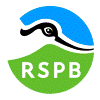| 12,420 km | |
| 1,414,757 km2 | |
| 116 |
Summary/History
As an island country lying in the North Sea the United Kingdom possesses an extensive coastline and its marine areas are important for a wide range of birds. Just under 8 million seabirds from 25 species breed in Britain and Ireland making it of global importance for a number of species, including 90% of the world's Manx Shearwaters (LC) and 68% of Northern Gannets (LC). Other priority species include: the Black Scoter (NT), Roseate Tern (LC), Common Tern (LC), Little Tern (LC), Sandwich Tern (LC), Northern Fulmar (LC), Black-legged Kittiwake (LC), Common Guillemot (LC), Razorbill (LC), European Shag (LC) and European Storm Petrel (LC). The RSPB has identified coastal IBAs using significant datasets which, to a large extent, have been gathered by volunteers however this is not feasible in marine environments and without coordination and resource delivery for this work by the government it has not been possible for the RSPB to identify a comprehensive set of marine IBA boundaries yet. A particular concern is the identification of offshore foraging areas, especially those related to breeding seabird colonies. While large amounts of data (both tracking and at-sea survey) have been collected by Universities and during marine environmental impact assessments there has been limited coordination and compilation of this data into a central database. The RSPB and partners are involved in the FAME seabird project which involves the RSPB monitoring and tracking European Shag, Common Guillemot, Razorbill, Black-legged Kittiwake and Northern Fulmar at their breeding colonies. The RSPB has created foraging fact sheets for 23 out of 43 UK breeding seabirds based on information held in the BirdLife Seabird Foraging Database, with an aim of providing standardised information to marine projects within the UK that are charged with bringing forward recommendations for national level marine protected areas.
Key threats to British seabird species include:
o Overfishing of the prey base and localised bycatch
o Climate change induced shifts in prey distribution
o Pollution, especially oil
o Habitat loss (due to coastal and offshore development)
National priorities
o Designate those sites already identified as meeting SPA requirements;
o Carry out data gap analysis and targeted survey work offshore to identify foraging areas for breeding and non-breeding seabirds
o Invest in a coherent seabird survey and monitoring programme to facilitate both the identification of SPAs and monitoring of their condition once designated
o Collate exisiting datasets to define additional sites
Government's support/relevant policy
The Marine IBA work carried out by the RSPB is being pursued primarily to identify and implement a UK marine SPA network under the EU Birds Directive. The data held for proposed marine SPAs currently mainly relates to seaward extensions of existing terrestrial IBAs, the RSPB is currently working with the JNCC proposal to implement generic radii extensions behaviour adjacent to breeding seabird SPAs. Recommendations have been made and endorsed to extend existing SPAs for Common Guillemot (LC), Razorbill (LC), and Atlantic Puffin (LC) by 1 km into the marine environment, by 2 km for Northern Fulmar and northern gannet SPAs, and by at least 4 km for Manx shearwater SPAs. To date, maintenance extensions for these species have only been made for 31 Scottish SPAs: no extensions have come forward for relevant SPAs in England, Northern Ireland or Wales. JNCC has carried out an analysis of the ESAS data to try to identify potential offshore SPAs. The RSPB has welcomed this as a starting point but expressed concern that it identifies a severely limited network of sites and underlines the significant limitations of relying on ESAS data because of both its age and very incomplete spatial and temporal coverage. An aerial survey programme covering the important inshore areas around the UK continues. Data from the FAME project will be used to help identify and delineate potential marine SPAs for the relevant species Please see policy tab for list of agreements that this country is party to.
|
Albatrosses |
0 |
Penguins |
0 |
Petrels and shearwaters |
5 |
Cormorants |
2 |
|
Storm-petrels |
2 |
Auks |
6 |
Gulls and terns |
18 |
Ducks, geese and swans |
8 |
IUCN Red List Status
| 1 | |
| 0 | |
| 7 (37th) | |
| 13% (72nd) | |
| 1 | |
| 0 | |
| 6 | |
| 2 | |
| 46 | |
| 0 |
The numbers in brackets refer to the country's rank when compared to other countries and territories globally.
References
o Skov H., Durinck J., Leopold, M.F. and Tasker M.L. (2007). A quantitative method for evaluating the importance of marine areas for conservation of birds. Biological Conservation 136: 362

Species |
|
| Total number of birds | 269 |
| Globally threatened birds | 15 |
| Country endemics | 1 |
Important Bird & Biodiversity Areas |
|
| Number of IBAs | 313 |
| Total IBA area |
|
| IBA area as % of land area |
|
Endemic Bird Areas |
|
| Number of EBAs | 1 |
Recommended Citation
BirdLife International (2024) Country profile: United Kingdom. Downloaded from https://datazone.birdlife.org/country/united-kingdom on 23/12/2024.